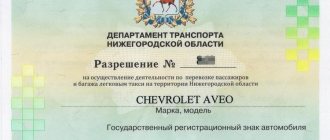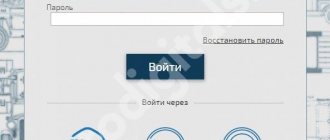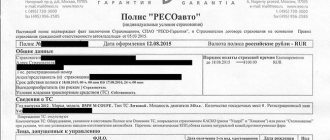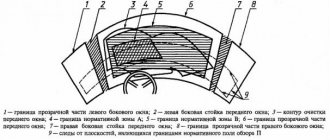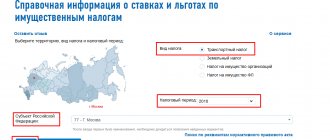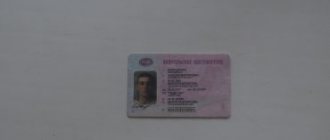Regulatory documents governing the carriage of passengers
Current legislation requires that such a responsible matter as the mass transportation of passengers by bus be approached in compliance with all established rules and regulations.
This means that regardless of the type of transportation - urban or intercity - the bus is intended for, the established rules apply equally to both drivers and passengers.
Attention! The current rules for the carriage of passengers and luggage on buses consist of the following regulatory documents:
- Federal Law No. 220, adopted on July 13, 2015. It concerns the regulation of the procedure for transporting people by buses running on regular routes,
- Decree of the Government of the Russian Federation dated February 14, 2002 No. 112 with amendments and additions dated April 28, 2015, which approved the Rules for the carriage of passengers and luggage in bus transport (hereinafter referred to as the Rules),
- Federal Law Charter of motor transport and urban ground electric transport dated November 8, 2007 N 259-FZ (hereinafter referred to as the Charter).
Rostransnadzor can additionally issue orders, approve instructions, and send letters to carriers to regulate the activities of transport companies.
Since life does not stand still, these regulations are constantly changing, amendments and additions are made to them. In addition, each region of the country has the right to adopt its own regulations in addition to existing laws at the Federal level.
For example, the State Duma is considering bill No. 985164-6, which concerns changes to the content of Article 3.1 of the Charter.
Accident involving a bus.
Legal regulation
The main document regulating this type of activity is Federal Law No. 220 “On the organization of regular passenger transportation.” This regulatory act presents the basic requirements and procedure for passenger transportation.
Also, the presented type of activity is regulated by other regulatory documents. These include the Civil Code of the Russian Federation (Article 786), which states the need for a contract of carriage. Decree of the Government of the Russian Federation No. 195 (dated February 27, 2019) approves the need to obtain a license to transport passengers by bus.
Bus requirements
In order for a bus to be approved for passenger transportation, it must meet the following requirements:
- be in the property of the carrier or other legal possession, as required by paragraph 2 of Article 34.1. Federal Law No. 220,
- according to paragraph 29 of the Rules, a route indicator must be placed on the windshield, on the rear window and on the right side of the bus body, which can be read at a certain distance,
- the sign placed on the windshield must contain the name of both the point of departure and the destination,
- the sign, which is located on the right side of the body, must indicate the name of the starting point, the main intermediate stopping points, the final destination,
- according to paragraph 31 of the Rules, the pointer placed on the windshield must be no higher than 14 cm,
- According to paragraph 36 of the Rules, brief or complete information about the carrier is placed on the windshield or on the right side of the bus body.
Important! The following information must be placed in the bus interior, as provided for in paragraph 37 of the Rules:
- full name, location address, contact phone numbers of the carrier,
- last name, first name, patronymic of the driver and conductor. If there are several drivers, information about each person driving the vehicle is indicated.
- name, location address, contact numbers of the government body that exercises control over this transportation route,
- in a place accessible to passengers - numbers indicating seating areas. This requirement does not apply to buses that do not have specific seating numbers for passengers,
- the cost of travel to the final and intermediate destinations and the price of baggage transportation,
- signs with places intended for people with children, as well as people with disabilities or limited physical capabilities,
- signs where fire extinguishers are located, buttons for emergency bus stops, emergency exit locations,
- A separate sign with an extract or the full text of the Rules for using the vehicle must be located in an accessible place.
Before departure, the bus must be inspected by the carrier’s specialists for compliance with its safety requirements, which are provided for by the Federal Law of December 10, 1995 “On Safety...”.
In addition, the vehicle, as required by subparagraph “b” of paragraph 1 of part 1 of Article 15 of Federal Law No. 170 of 06/01/11 “On Technical...”, must have a valid inspection period, which is carried out every six months.
Attention! Our qualified lawyers will assist you free of charge and around the clock on any issues. Find out more here.
Requirements for buses in winter
Complete shutdown, as well as malfunction of stoves and other heating systems of passenger buses, is prohibited according to the Rules.
Any passenger will have every right to complain about the transport company when he was traveling on a bus with ice-covered windows.
In addition, it is also mandatory to change the tires on bus wheels to proper ones before the winter season, and you should also check whether the windows, hatches and doors close well.
Before operating buses of any importance (long-distance or urban passenger transport) in winter, the technician must be thoroughly inspected. If necessary, carry out major repairs.
Any organization of trips for tourist, general civil or other purposes must be formalized accordingly.
If a transport company has passed a tender or competition to operate regular routes, then it must have an appropriate certificate giving it the right to operate its buses on specific routes for a certain period of time.
In addition, a standard set of documentation must always be observed when operating buses within the city, between cities, regions and regions, as well as between countries.
And for this, at the same time, the driving staff and the technical condition of the buses must also comply with the Charter and Rules.
Tariffs for passenger transportation by road are shown in the article: tariffs for passenger transportation by road. For what rules are used to transport passengers in a minibus, see the page.
Find out what rules govern the transportation of children by railway transport from the information.
Driver's rights and responsibilities
Clause 1 of Part 1 of Article 34.1. Federal Law No. 220 requires that only a driver who has an employment relationship with the carrier as a legal entity or individual entrepreneur be allowed to drive a bus.
In this case, information about such a driver must be contained in the register of passenger transportation routes. During the period of preparation for the route and departure for the flight, the driver must comply with the duties that are regulated by the instructions of the specific carrier.
Please note! They are as follows:
- undergo a pre-trip medical examination,
- check the external and internal condition of the bus,
- Is the bus fueled, what condition are the tires in,
- presence and serviceability of rear view mirrors,
- operability of emergency exits,
- while driving, adhere to the established schedule of arrival at destinations,
- have identification documents with you, as well as a driver’s license, which must be presented at the request of the traffic police,
- while driving, wear a driver's uniform, if provided by the carrier,
- When the bus stops for more than 5 minutes, turn off the engine,
- choose the driving speed depending on the state of the roadway and weather conditions in order to ensure traffic safety,
- carry other responsibilities.
Travel and baggage rules
Pay and benefits
2.1.
Payment for travel in accordance with current tariffs is made upon entering the bus using a unified transport card (hereinafter referred to as UTC), using a bank card with contactless payment technology (if equipped) or in cash. 2.2. To pay for travel on buses equipped with turnstiles and/or validators, passengers must tap the ETK on the validator twice: when entering to indicate the initial stop, and when exiting to indicate the exit stop. Otherwise, the amount may be written off incorrectly. The fare is considered paid if confirmation of successful payment appears on the payment terminal in the form of a text, sound or color notification. If a message, sound or color signal appears on the payment terminal about the impossibility of payment due to insufficient funds on the ETC or bank card, passengers are required to pay for the fare in any other available way.
2.3. If there is a malfunction of the ETK or bank card identified using payment terminals, passengers are not exempt from the need to pay in any other available way at the single-trip rate.
2.4. A single transport card can be accepted to pay for the fare of only one passenger.
2.5. The cost of travel, baggage and hand luggage is indicated on the corresponding information sticker in the bus cabin. The cost of travel on the routes of MOSTRANSAVTO JSC with regulated tariffs is established by the Government of the Moscow Region and is regulated by the relevant Resolution posted on the website www.mostransavto.ru. All benefits provided for by current legislation apply on these routes. The fare on routes with unregulated fares is set by the carrier independently. Passengers can distinguish one type of route from another by the color of the font on the signs with the route number located on the windshield and side windows of the vehicle. The route marked in black indicates that this vehicle is subject to a regulated fare, and in red – an unregulated fare. For buses with an electronic display, if there is a duplicate red sign on the route, an unregulated fare applies, and without it, a regulated fare applies.
2.6. When paying in cash, the passenger is obliged to keep the ticket throughout the trip and present it at the first request of the persons exercising control.
2.7. When presenting a discount ticket or free travel, the passenger must have with him documents confirming his right to the discount or free travel.
2.8. In case of termination of a trip on a bus due to its malfunction, accident or other reasons beyond the control of the passenger, the passenger has the right to use a ticket purchased for cash to travel on the next bus on the same route.
Required Documentation
Drivers who work on passenger buses on city routes must have with them:
- information about whether the carrier company has the appropriate license,
- driving license with the appropriate category, for example D, D, DE, D1,
- open MTPL insurance policy with unlimited validity period,
- waybill for passenger transportation on a specific city route during the day,
- a note confirming that you have undergone a medical examination before leaving for the route,
- diagnostic card on daily technical inspection of the bus before departure on the route,
- original vehicle registration certificate indicating the assigned license plates,
- technical passport for the bus.
If during the check it is revealed that the driver does not have any documents, then the traffic police officer can draw up a report on an administrative offense, based on the results of which a substantial fine will be applied to the driver or carrier.
To prevent this from happening, the driver must have the entire set of documents.
Driver examination.
Requirements for buses for transportation in the city
For chartered buses or irregular routes, their own rules and tariffs for payment for the provision of services for transporting people are established.
There are also requirements for buses for transporting passengers in 2021, which include the availability of certain documentation that the carrier must have, the responsibilities of drivers and the technical condition of the bus vehicle itself.
Documentation
The driver of a city passenger vehicle (bus) must have the following documents with him:
- license of the carrier company corresponding to the category of transportation;
- driver's driver's license with category D (D, DE, D1, etc.);
- MTPL policy (unlimited, open);
- waybills for carrying out a certain number of flights on a given city route during the day;
- certificate confirming that the driver has passed a medical examination;
- diagnostic vehicle inspection card;
- vehicle registration certificate with license plates assigned to it;
- bus registration certificate.
The absence of certain papers in the event of identified violations of the Rules for the carriage of passengers in city transport can provoke large fines issued by the traffic patrol service, both to the violating driver himself and to the company in which he is employed. Therefore, it will be better if the driver has all the documentation.
Drivers
All drivers are required to obey the schedule or schedule, as well as custom routes that pass through the transport company, in accordance with the basic rules of its activities.
For example, regular buses follow a schedule, which must necessarily be agreed upon with local authorities - the transport department in the executive committee of the city where the bus runs.
The same buses that operate from time to time usually run on irregular routes and are called custom buses.
Every driver making certain trips around the city must take into account the following rules:
- Follow the bus schedule along the given route and do not deviate from it (both the schedule and the route).
- It is the direct responsibility of the driver to follow all traffic rules.
- When boarding and disembarking people, the driver must always look in the side-view mirror to see if there are passengers in the doorways, and only then close the doors.
- If the cabin does not have a conductor accompanying the route or a digital validator for payments with electronic travel cards in the form of plastic cards, the driver is obliged to collect payment from passengers.
- Boarding and disembarking of people must be done only when the vehicle is completely stopped.
- Drivers are required to comply with all rules regarding the transportation and collection of payment for privileged categories of citizens.
- It is allowed to transport people standing in this type of transport.
- If you have oversized luggage exceeding the three-dimensional parameters of more than 180 cm, an additional fee will be charged for the seat occupied on the bus.
- On regular buses, the driver is required to report the name of the stopping points, unless there is an automated warning system built into the bus control panel for this purpose.
At the same time, the driver must also ensure that passengers do not lean against the doors, do not break them, and be careful when entering and exiting the vehicle. Hand luggage is not taken into account. It must correspond to dimensions not exceeding 115 cm.
Technical condition of transport
Transporting people by public transport also implies that the buses will meet all technical requirements that are imposed on this category of transportation by law and Rules:
- Type, brand, design, power - everything must correspond to the type of buses intended for daily transportation of people along intracity routes.
- The weight and dimensions of the bus must comply with all standards for free passage on the country's roads.
- To move around the city in the evening, all the lights in the cabin must be turned on.
- Stop notification speakers should also operate throughout the cabin.
- All door and window mechanisms must be in good working order.
- Buses must be heated in winter.
Numbering of seats is not required for buses with regular routes. Because the sale of such tickets is not carried out strictly according to seats.
Safety requirements for transporting people by vehicle are covered in the article: safety requirements for transporting people. Read about the rules for transporting passengers on public transport here.
Passenger rights and obligations
As for passengers who use public transport, they have the following rights:
- without restrictions, purchase tickets for a trip on any regular route, regardless of the carrier,
- get acquainted with the bus schedule not only at any stopping point, but also from the driver carrying out transportation along the route (clause 7 of the Rules),
- board and disembark the bus at any stop point provided for by the schedule (clause 11 of the Rules),
- demand to stop the bus on any part of the route, having previously notified the driver or conductor (clause 12 of the Rules),
- if you have a travel ticket, use waiting rooms and toilets, which are located inside bus terminal buildings or bus stations, free of charge (clause 21 of the Rules),
- carry hand luggage regardless of the type of packaging (clause 54 of the Rules),
- hand over luggage to the driver to place it in a special compartment of the bus,
- carry children under 7 years of age on city and suburban buses without purchasing a separate ticket (clause 1, part 1, article 21 of the Charter),
- carry children under 5 years of age on intercity buses without purchasing a separate ticket (clause 1, part 1, article 21 of the Charter).
Remember! The passenger is obliged:
- purchase a ticket at the ticket office of a bus station or bus station for travel along the route, which should be kept with you until the end of the trip,
- present the ticket for inspection at the request of the conductor or controller,
- when traveling with a child who has the right to free travel, have with you a document that certifies his age (Part 3 of Article 21 of the Charter),
- During the trip, follow the internal rules established by the carrier.
Where can I wait for public transport?
4.8. Waiting for a route vehicle and a taxi is allowed only on landing platforms raised above the roadway, and if there are none, on the sidewalk or side of the road.
Passengers can expect public transport:
- On Pavement;
- on the side of the road;
- on a special raised platform (in this case we are talking about a special island located next to the tram tracks in the center of the road).
In any case, you cannot wait for public transport on the roadway.
Bus stops are indicated by special signs:
Additionally, yellow markings can be applied:
All about tickets
According to paragraph 42 of the Rules, passengers travel on the basis of purchased tickets. It must contain the mandatory details that are specified in Appendix No. 1 to the Rules.
Tickets sold at the box office can be either personalized or non-registered. Personal ones are used in cases where it is required to transfer data about passengers to the AIS of personal data (clause 47 of the Rules).
Personalized tickets are sold to passengers on the basis of a document that can be used to identify their identity.
Points for selling bus tickets depend on the type of service:
| Message type | Where can I buy a ticket |
| Urban or suburban | At the conductor, bus driver, at the ticket office of a bus station, bus station, at a specialized ticket sales point |
| Intercity | At the ticket office of the intercity bus station |
In certain cases, a passenger may be denied a ticket.
Attention! These are the following cases:
- all tickets for seated seats have been sold, and according to the conditions of transportation, only seated passengers can be transported,
- the number of tickets sold exceeded the design capacity of the bus.
Boarding and disembarking
When boarding and disembarking passengers from the bus, only service doors are used. In addition to them, the vehicle must be equipped with an emergency exit and emergency hatches. They are intended for use only if, while driving or parking, there is a danger to the life and health of passengers, such as a fire.
Every door on a vehicle must be easy to open from the inside. The location of the emergency exit must be indicated by the inscription “Emergency Exit”, and the location of the emergency exit – “Emergency Exit”.
Small buses must have at least two doors. On buses with a large capacity, the number of exit doors should be greater. Their specific number depends on the availability of passenger seats with which the vehicle is equipped.
Control over payment of fares during the route is carried out by the conductor or driver. If this is entrusted to the driver, then boarding and disembarking of passengers is carried out through the front door and only after the bus has completely stopped moving.
Watch the video. New rules for passenger transportation:
Rules for transporting people - is the driver always right?
Sometimes some situations are even comical. You can hear a lot of stories like this from your friends and work colleagues: “I’m late for work, I call a taxi. A car pulls up, and, hearing the words that I am in a hurry, the driver begins to move away, completely ignoring the door that is not tightly slammed and the passenger who did not have time to buckle up. To my indignant: “Where are we in such a hurry?” was the excellent answer: “But you’re late!”
The driver is right in one thing - the passenger is late, but not so late as to get into an accident and pay with his health, at best. In addition, if such a violation is stopped by a traffic police inspector, the same driver will have to pay the fine for violating the rules for transporting people.
So, in accordance with clause 22.7 of the traffic rules, the driver is obliged to check that the doors are closed and only after that start or continue driving. The ban on transporting people outside the cabin of a car is no less regularly violated. Remember, you are not a wedding doll or luggage to move like this - the rules for transporting goods are, moreover, completely different.
Organized travel for a group of children is possible in accordance with traffic regulations on a bus that has previously been marked with the “Transportation of Children” sign. It is the driver’s responsibility to create optimal conditions for transporting children, taking into account the technical features of the vehicle. There should not be any children sitting in the aisles on chairs, stools or boxes inside the bus.
Children under 12 years of age can travel in cars in the front seat only in child car seats selected according to the child’s weight and height. In other cases, it is possible to use seat belts. It is not allowed (clause 22.2) for children to travel on the side of a truck.
Intercity communication
Intercity transportation is regulated by the Charter. Thus, according to Part 4 of Article 4 of this regulatory act, intercity transportation includes transportation that is carried out between populated areas, the distance between which is more than 50 km.
To operate on such routes, buses must have soft suspension and be equipped with soft seats and climate control systems.
Important! Intercity transportation of passengers is carried out:
- without transfers to another bus (end-to-end method),
- with transfers to another bus (sectional method).
Buses on request
Part 2 of Article 27 of the Charter provides for the possibility of transporting passengers under a charter agreement. These are the so-called “irregular shipments”.
The route of movement on the basis of such an agreement is determined by the customer. If the carrier does not provide the bus at the time and place specified in the contract, then he is obliged to pay penalties.
Their size is determined by part 2 of Article 34 of the Charter and is calculated based on payment for the cost of a passenger seat. In absolute terms it is 20 percent of the contract amount.
Excursion buses
The carrier can use the buses in the fleet not only for regular and irregular passenger transportation, but also for excursions. In this case, no structural changes are required to the vehicle.
The driver must meet the same requirements as when using it to transport passengers along the route. Moreover, the passengers of the excursion bus are represented by an organized group of citizens.
All conditions and features of the excursion trip are stipulated in the contract concluded in writing.
Please note! It should contain information:
- about the final destination,
- about the travel route,
- about the time and place of stops,
- about the number of tourists who will take part in the trip,
- about the person responsible for the transportation of passengers,
- about the time of use of the bus on an excursion trip.
If a bus is provided for excursion trips on a regular basis, then this circumstance must be reflected in the contract. In addition, some features of the terms of the contract must also be reflected.
For example:
- the bus must be ready for tourists to board no later than 15 minutes before the start of the trip along the agreed route,
- start of movement - no earlier than 6 o'clock in the morning,
- end of movement – no later than 22 pm,
- The guide or accompanying person must have a list of names of all participants in the excursion.
How to file a complaint against a bus driver?
What is a route vehicle?
The concept of a route vehicle is given in paragraph 1.2 of the traffic rules:
Route vehicle is a public vehicle (bus, trolleybus, tram) intended for transporting people on roads and moving along a set route with designated stopping places.
Thus, route vehicles include:
- trolleybuses,
- buses,
- minibuses (small buses),
- trams.
Transportation in winter
If passengers are transported in winter, then turning off the heating of the bus interior is completely prohibited. If the heating system is faulty, the bus cannot be released. If the glass of the bus windows becomes icy, this may be the basis for passengers to file complaints against the carrier.
To prevent road accidents, the bus must be equipped with studded tires. Summer tires must be removed. Failure to comply with this requirement will result in the driver being fined.
Before driving, the driver must check the technical condition of the bus, as well as how tightly the doors and windows are closed. The heating device with which the bus is equipped must not emit toxic substances. And its location should prevent contact with vehicle passengers.
Requirements in winter
In winter, additional requirements apply to vehicles, for example, the need to change tires. You should also check the tightness of windows, doors and hatches. The heating system must operate without interruption.
Before the onset of the winter season, it is necessary to conduct a thorough check of the equipment in advance. If damage is detected, major repairs should be carried out if necessary.
The package of documents must be completed in full in accordance with the category of transportation. The composition of drivers and technical characteristics of transport must not violate established standards.
The text was prepared by the staff.
Shift transportation
Passenger transportation can be carried out on a rotational basis, which is used:
- for the delivery of workers and employees of an enterprise, organization or institution from their place of residence to their place of work and back. At the same time, in free time, the bus can be used for business trips during working hours. A striking example is a school bus that collects students at their place of residence and takes them to the school building, or the use of a bus in rural areas where there is a long traffic gap,
- for delivering shifts of workers to construction sites, mines, and oil developments.
The shift bus must have enough space to accommodate luggage, as well as tools necessary for work, and have folding stairs for boarding and disembarking workers.
Remember! According to its design features, a rotational bus should be able to:
- overcome difficult-to-reach traffic areas,
- install professional equipment.
This is important for workers in the oil and energy industries. As practice shows, rotational buses are cheap and irreplaceable transport.
Service transport
Any legal entity or individual entrepreneur has the right to buy a bus for their business use. The owner will dispose of this transport independently.
According to the owner's instructions, documented, the bus can be used:
- for employee business trips,
- for business trips,
- for the delivery of workers and employees from their place of residence to work and back,
- for going to corporate events.
Despite the fact that the bus is used for official purposes, its operation must ensure safety during transportation.
Possible fines for violations
Each bus that is used to transport passengers must be equipped with a tachograph. In case of absence of a device, illegal correction of its readings, or non-compliance of the device with the guilty official, in accordance with Article 11.23 of the Administrative Code, a fine of 5,000 to 10,000 rubles is applied.
If the driver’s work and rest regime is violated, the punishment will range from 1,000 to 3,000 rubles. For gross violations of the rules for transporting passengers, the carrier may be deprived of a license for this type of activity.
Watch the video. Federal Law No. 386. Bus transportation of passengers strictly under license:

